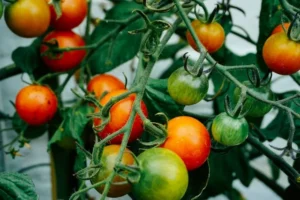The reason we often prefer foods from this group could be due to ancient DNA and a particular gene. Humans carry multiple copies of a gene that allows them to begin breaking down starch from complex carbohydrates in the mouth, a first step in metabolizing foods like bread and pasta. But when did this gene expansion begin? A new study suggests it dates back more than 800,000 years.
Led by researchers at the University at Buffalo and the Jackson Laboratory for Genomic Medicine—both in the United States—it shows how early duplications of this gene laid the groundwork for the wide genetic variation that still exists today and influences how effectively humans digest starchy foods.
“If you’ve ever struggled to cut down on carbs, ancient DNA could be to blame,” the lab summarizes in a statement.
The research results, published in the journal Science, reveal that the duplication of the gene, known as the salivary amylase gene ( AMY1 ), may not only have helped shape human adaptation to starchy foods but may have occurred long before the advent of agriculture.
“The idea is that the more amylase genes you have, the more amylase you can produce and the more starch you can digest efficiently,” explains Omer Gokcumen of the University at Buffalo. Amylase is an enzyme that not only breaks down starch into glucose but also gives bread its flavor.
To reach their conclusions, the team, also led by Charles Lee, used advanced genomic techniques to map the AMY1 gene region in extraordinary detail.
Analyzing the genomes of 68 ancient humans, including a 45,000-year-old sample from Siberia, she found that pre-agricultural hunter-gatherers already had an average of four to eight copies of AMY1 per diploid cell, suggesting that humans were already walking around Eurasia with a wide variety of high AMY1 copy numbers long before they started domesticating plants and eating excessive amounts of starch.
The study also found that duplications of the AMY1 gene occurred in Neanderthals and Denisovans.
“This suggests that the AMY1 gene may have first duplicated more than 800,000 years ago, long before humans diverged from Neanderthals and much earlier than previously thought,” says Kwondo Kim of the Jackson Lab.
Gokcumen adds: “The initial duplications in our genomes laid the groundwork for significant variation in the amylase region, allowing humans to adapt to changing diets as starch consumption increased dramatically with the advent of new technologies and lifestyles.”
The research also highlights the impact of agriculture on AMY1 variation.
While early hunter-gatherers had multiple copies of the gene, European farmers experienced an increase in the average copy number of AMY1 over the past 4,000 years, likely due to their starch-rich diets.
Furthermore, Gokcumen’s previous research had shown that domesticated animals that live with humans, such as dogs and pigs, also had a higher number of copies of AMY1 compared to animals that do not rely on starchy diets.






















+ There are no comments
Add yours